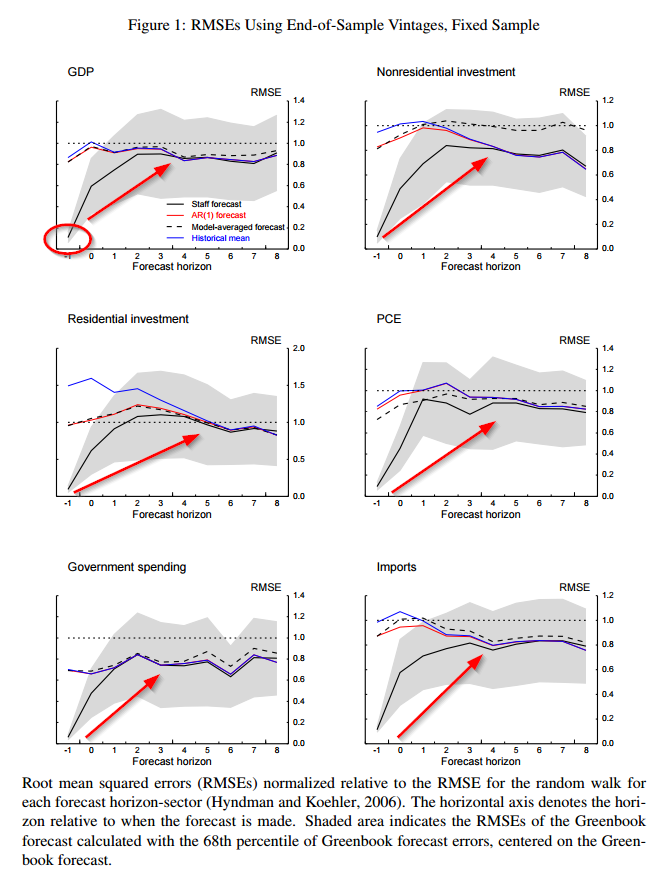Macroeconomic forecasting is incredibly difficult. The results from this paper suggest that the brainpower of the Fed’s 100 person economics team can predict 3 to 6 months out with a reasonable degree of success, but beyond that time horizon (e.g., 1-year), basic forecasting models perform just as well as the human experts. (see figure below).
The Accuracy of Forecasts Prepared for the Federal Open Market Committee
We analyze forecasts of consumption, nonresidential investment, residential investment, government spending, exports, imports, inventories, gross domestic product, inflation, and unemployment prepared by the staff of the Board of Governors of the Federal Reserve System for meetings of the Federal Open Market Committee from 1997 to 2008, called the Greenbooks…We find that Greenbook forecasts significantly outperform our benchmark forecasts for horizons less than one quarter ahead. However, by the one-year forecast horizon, typically at least one of our forecasting benchmarks performs as well as Greenbook forecasts…
Here is a key chart from the paper:

The results are hypothetical results and are NOT an indicator of future results and do NOT represent returns that any investor actually attained. Indexes are unmanaged, do not reflect management or trading fees, and one cannot invest directly in an index. Additional information regarding the construction of these results is available upon request.
About the Author: Wesley Gray, PhD
—
Important Disclosures
For informational and educational purposes only and should not be construed as specific investment, accounting, legal, or tax advice. Certain information is deemed to be reliable, but its accuracy and completeness cannot be guaranteed. Third party information may become outdated or otherwise superseded without notice. Neither the Securities and Exchange Commission (SEC) nor any other federal or state agency has approved, determined the accuracy, or confirmed the adequacy of this article.
The views and opinions expressed herein are those of the author and do not necessarily reflect the views of Alpha Architect, its affiliates or its employees. Our full disclosures are available here. Definitions of common statistics used in our analysis are available here (towards the bottom).
Join thousands of other readers and subscribe to our blog.

